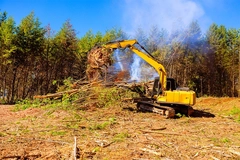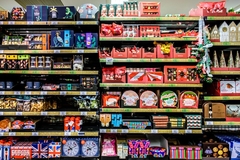
- Industry news
Industry news
- Category news
Category news
- Reports
- Key trends
- Multimedia
- Journal
- Events
- Suppliers
- Home
- Industry news
Industry news
- Category news
Category news
- Reports
- Key trends
- Multimedia
- Events
- Suppliers
Rohm and Haas Introduces 2nd Generation Robond (TM) L Series of Water-based Adhesives for Dry Bond Packaging Laminations

The product is developed to meet general and medium performance applications for a broad range of packaging laminations.
09/03/06 PHILADELPHIA – Rohm and Haas has announced a significant technology development with their Robond™ L, 2nd generation product family of water-based, dry bond laminating adhesives. Specifically developed to meet general and medium performance applications for a broad range of packaging laminations, this patented technology promises converters bond strength and chemical resistance typical of solvent adhesives, with excellent laminating performance even on CPP films and laminate constructions with aluminum foil. Greater bond strength, chemical resistance to filled products, as well the ability to operate at faster line speeds, often using the same product for multiple packaging requirements, are reported to be key benefits of the new product line. Suitable for a broad range of substrates including films, foils, and paper, the laminations also endure pasteurization and aggressive filling goods, such as flavored coffee or sauces. The company reports that customers who have beta tested the Robond ™ L 2nd generation adhesives found the lower coat weights and high running speeds did not cause foaming or anilox roller clogging, problems associated with earlier water-based products. The ability to run on existing solvent-based equipment is expected to be an especially appealing operating attribute.

Innovative New Technology
"This is one of our most important innovations of the past year," states Dr. Barry Snyder, global research director for Rohm and Haas adhesives and sealants. "This latest generation of adhesives for dry bond laminating represents something better – much better – than anything else on the market," he adds. According to Mary Elizabeth Staab, the Rohm and Haas Packaging and Converting marketing manager spearheading the company’s introduction of the new technology, "We were the first to introduce good acrylic solutions to the market, and by working with customers and learning about the benefits and limits of these early acrylics, we’ve been able to perfect our offering. Based on the use of a true emulsion solution, this technology provides important benefits, such as far easier running and handling, pot life that lasts longer than a full shift, faster curing with higher shear strength that allows for immediate slitting in line, and of course, environmental, worker, and food safety benefits associated with a water-based solution. In all, products in this line outperform any of the standard technologies in use for both general and medium performance applications," adds Staab. The adhesives reportedly have no aromatic isocyanates, hence no PAA issues, and no retained solvents in laminates, nor do they produce costly-to-deal-with VOC emissions.
Increased Line Speeds, Decreased Storage Needs
"Cost savings accrue through several channels," says Theo Verweerden, global market manager, Packaging and Converting. "Many converters increase line speeds to over 300 meters per minute and slit much sooner than with other technologies. Print-to-ship within a day or so is common, too, which drastically reduces storage needs and facilitates faster delivery," notes Verweerden. "With these adhesives, converters can de-bottleneck their operations and bring more flexibility to the supply chain, plus, lead time to end-users can drop dramatically."










